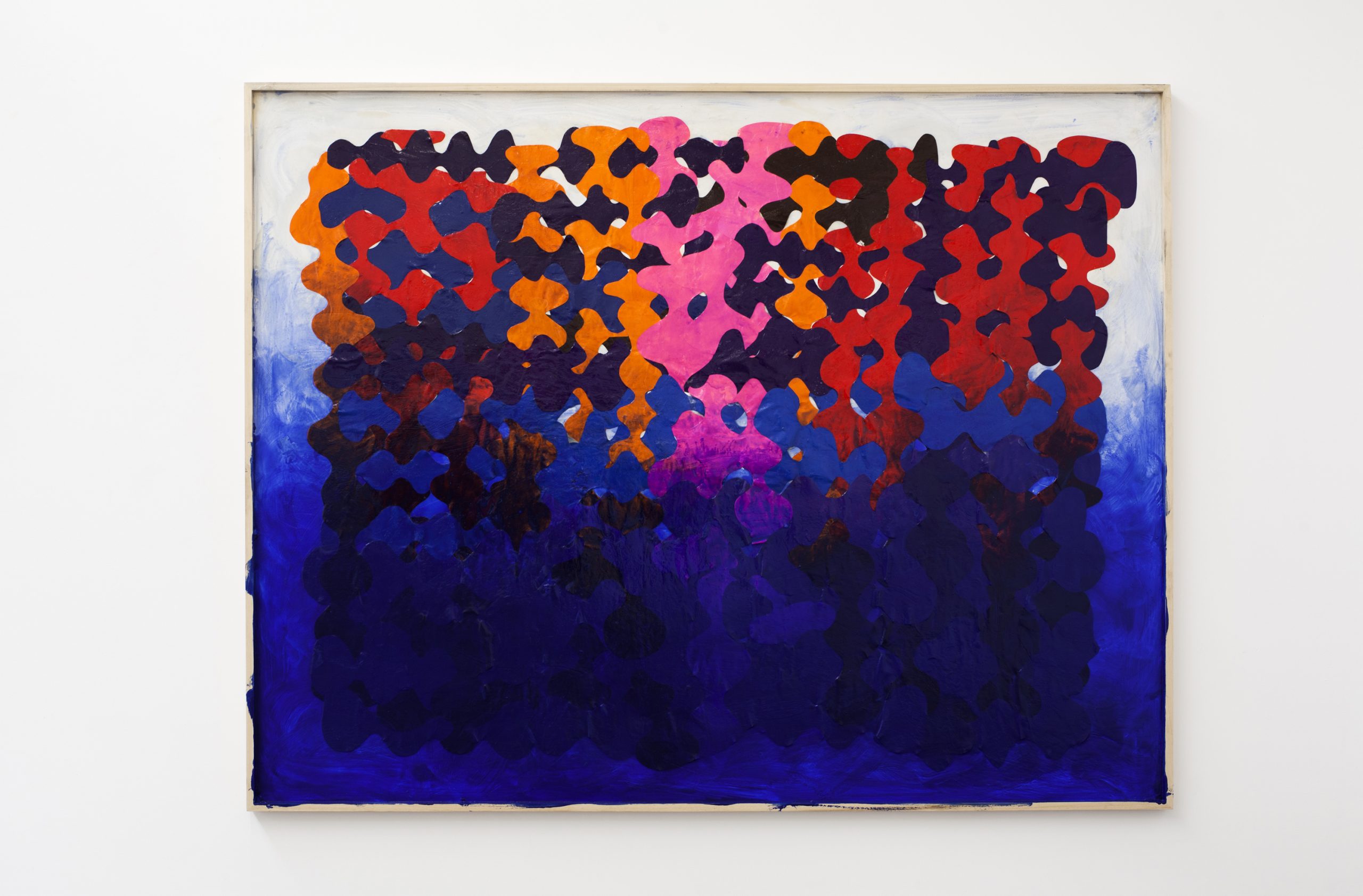Thanks to his passion for popular science, Ballesteros envisions his work as the craft of constant experimentation. His art often verges on the impossible and the unfathomable one of its recurring themes. In books of popular science, Ballesteros finds the guidelines that organize his production process, which sometimes yields visual results and sometimes does not. The work is a fragile record of the artist’s body in action. Some of those guidelines seem to deconstruct the graphic act (for example, painting a rectangle by repeating the gesture of drawing a line). Other times, the artist’s physical curiosity is what sets off a movement (for instance, dropping his fist onto the canvas) to form what might be called a choreographic guideline that is expressed visually. Together, the guidelines generate a steady rhythm akin to a spiritual exercise.
In some of his series, Ballesteros applies analytical procedures to the results of those actions; he may, for instance, count the number of lines drawn or the number of intersections between lines in a deliberately failed attempt to fathom the possibilities of the Universe. The numbers are in the titles: Línea trazada con ojos cerrados caminando alrededor de una tela durante 30 minutos [Line Drawn with Eyes Closed Walking Around a Canvas for Thirty Minutes] and 1749 intersecciones [1749 Intersections], both from 2001, and in the series of nocturnal and astronomical urban photographs in which he counts and paints in black felt pen the light sources to obtain an “impossible image” where light’s only presence is as reflection.
As a metaphor for collective work, for the tribe of artists that makes up the culture of any era to use the artist’s words -Ballesteros makes drawings, murals, and actions with others over the course of days or months and on the basis of simple elements. His proposals are many: “pencil races,” model airplane flights, making a skein with a piece of string as long as the earth’s circumference, and others.


 Ballesteros Ernesto
Ballesteros Ernesto